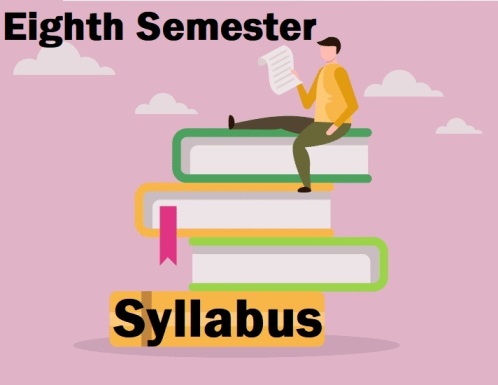Syllabus Third Semester Digital System Design EC303
The concepts developed in this course will aid in quantification of several concepts in chemistry that have been introduced at the 10+2 levels in schools. Technology is being increasingly based on the electronic, atomic and molecular level modifications, Syllabus First Semester Engineering Chemistry BT101 is given here.
Quantum theory is more than 100 years old and to understand phenomena at nanometer levels, one has to base the description of all chemical processes at molecular levels. The course will enable the student to:
- Analyse microscopic chemistry in terms of atomic and molecular orbitals and intermolecular forces.
- Rationalise bulk properties and processes using thermodynamic considerations.
- Distinguish the ranges of the electromagnetic spectrum used for exciting different molecular energy levels in various spectroscopic techniques
- Rationalise periodic properties such as ionization potential, electronegativity, oxidation states and electronegativity.
- List major chemical reactions that are used in the synthesis of molecules.
EC 303 – Digital System Design
Registers and Counters: Asynchronous Ripple or serial counter. Asynchronous Up/Down counter – Synchronous counters – Synchronous Up/Downcounters – Programmable counters – Design of Synchronous counters: state diagram-State table –State minimization –State assignment – Excitation table and maps-Circuit. Implementation – Modulo–n counter, Registers – shift registers – Universal shift registers. Shift register counters – Ring counter – Shift counters – Sequence generators.
Logic Families and Semiconductor Memories: TTL NAND gate, Specifications, Noise margin, Propagation delay, fan-in, fan-out, Tristate TTL, ECL, CMOS families and their interfacing, Memory elements, Conceptof Programmable logic devices like FPGA. Logic implementation using Programmable Devices.
Practical List
1. Study of different basic digital logic gates and verification of their Truth Table.
2. Study and verification of the law of Boolean Algebra and De-Morgan’s Theorem.
3. Construction and verification of various combinational circuits such as Half Adder, Full Adder, Half & Full Subtractor.
4. Study of Multiplexer, De-multiplexer.
5. Study of Different Code Converters, Encoder, Decoder.
6. Construction and verification of various types of Flip-Flops using gates and IC’s.
7. Construction and Verification of different Shift Registers.
8. Construction and verification of different types of Counters.
9. Study of important TTL technologies, Verifications of important TTL Circuit Parameters.
Reference Books
1. Malvino & Leach, “Digital Principles and Applications”, TMH.
2. M. Morris Mano, “Digital Logic Design”, PHI
3. R.P. Jain, “Modern Digital Design”, TMH.
4. S. Salivahanan & S. Arivazhagan, “Digital Circuits and Design”, Vikas Publishing.
5. D. Roy Chaudhuri, Digital Circuits, “An Introduction Part -1 & 2”, Eureka Publisher.
6. Ronald J Tocci , “Digital Systems, Principles and Applications”, PHI.
7. Taub & Schilling, “Digital Integrated Electronics”, TMH.


